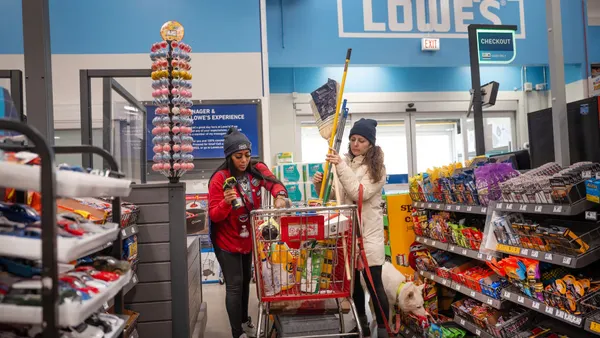Dive Brief:
- More than two-thirds of consumers say they have abandoned a digital task because the process was too annoying, according to a survey of 1,000 consumers released last week by digital experience platform provider Liferay.
- Ambiguity is part of the problem. Only one-third of respondents say digital self-service instructions are usually or always clear, and the majority, 84%, say they’ve found themselves re-entering information that a company should already have.
- “The key characteristic that makes for a seamless digital self-service experience is guidance,” Keith McIntosh, senior principal, research at Gartner, said in an email. “Customers should have clear guidance throughout the end-to-end digital experience.”
Dive Insight:
Poor guidance is a common problem that frustrates customers engaging in self-service journeys, but knowledge management and access to live agents can alleviate the friction.
Examples of poor guidance include a confusing or poorly marked user interface that makes navigation difficult, jargony or technical language in self-service content, and lack of detail in content that prevents customers from fully resolving their issue, according to McIntosh.
Consumers appreciate when companies offer clarity, with more than half looking for clear instructions. Nearly the same number look for simplicity in self-service interactions, according to the survey.
The key to creating a strong, clear self-service experience is good knowledge management, according to McIntosh. The knowledge base should be regularly updated to reflect current products, services and common issues and present it in easy to understand language.
“Organizations should also have a feedback mechanism so that customers can tell the organizations how useful (or unhelpful) self-service content is,” McIntosh said. “This allows for continual improvement over time.”
Companies can also benefit from gathering a combination of direct and indirect feedback about their self-service experience, according to McIntosh. Surveys and focus groups, combined with analytics that examine how customers are using self-service, can help identify points of friction.
When things do get confusing, it’s time for a live agent to step in. The study found that more than 2 in 5 consumers want support available to them, and about one-quarter want real-time chat within the self-service flow.
The inability for customers to transfer to another channel when they hit a roadblock is another common issue in self-service journeys, according to McIntosh. Companies can avoid this issue by building a pathway to live service within their self-service journeys.
“The basic idea is to incentivize a few steps in self-service before accessing an agent,” McIntosh said. “This way, all customers who could potentially be resolved in self-service have the chance to do so. And for customers who need extra help, they’ve already given the company some information that will be useful in expediting the necessary assisted interaction.”
Examples of this approach include a digital agent in the interactive voice response system that walks customers through the basics before routing them to a human agent if needed, or a chatbot that is equipped to pass the conversation to a person if it’s unable to resolve the issue.
“Organizations need to clearly communicate to customers, in both of these scenarios, that live help is accessible if needed,” McIntosh said.













